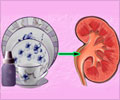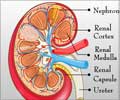Study of variations in hemoglobin levels to help dialysis patients
One of the most recurrent problems of hemodialysis is anemia. In order to live a better quality life, dialysis-dependent patients, needs to have an adequate hemoglobin level. Thus anemia correction is a very significant part of the dialysis process. One significiant treatment in anemaia, which encourages the production of red blood cells in bone marrow is the drug called erythropoiesis-stimulating agents (ESAs). This treatment has been a major break through in anemia treatment in chronic kidney disease (CKD). This drug is surrounded by controversy regarding its apt clinical usage and the high cost of ESAs.An August study in Journal of the American Society of Nephrology (JASN) presents a detailed analysis of patterns of change in hemoglobin levels, lending new insights into the factors that control hemoglobin levels and variations in patient responses to ESAs. "Our paper provides one means of describing variations in hemoglobin levels among dialysis patients and opens up the possibility of optimizing the treatment system on a rational basis," according to Dr. Eric J. Will of St. James's University Hospital, Leeds, United Kingdom.
Based upon data from a recent clinical trial involving ESAs, Dr. Will and colleagues used an approach called functional data analysis to study changes in hemoglobin levels over time, including responses to ESA treatment. "Our technique allowed characterization of the variation of hemoglobin level and ESA doses through representation as waveforms," says Dr. Will. "Unlike most statistical methods, our method relied on few assumptions about their potential patterns." The results suggested that hemoglobin levels were affected by the negative feedback control systems being attempted in clinical management. "This system can be conceived as an oscillation, like a pendulum, with the hemoglobin value swinging up and down over time," Dr. Will explains. "While these periodic effects may be seen as undesirable in clinical circumstances, they will be susceptible to manipulation and improvement only by acknowledging their true origins and designing experimental conditions that may lead to a means to improve matters."
The analysis also suggested that individual patients varied in their sensitivity to ESA treatment. The two different ESAs (epoetin beta and darbepoetin) compared in the original study produced a similar range of responses.
Dialysis patients receiving ESAs to treat anemia of kidney disease often have variations in hemoglobin levels. "These variations occur across the dialysis procedure and when patients become ill with other conditions, for whatever reason," Dr. Will explains. "There is also some wave-like variation over longer periods of time, perhaps across 20% of the range of an individual’s hemoglobin values. This is likely to be caused by variations in the patients' response to dose changes of the ESAs, which are difficult to adjust perfectly to correct hemoglobin values to the desired range."
The results are especially timely because of two ongoing debates over the use of ESAs to control anemia in CKD. "One is an unresolved scientific controversy over the possible cardiovascular risk of treatment intended to produce higher (more normal) hemoglobin levels, and the use of generous doses of ESAs, in patients with kidney disease," Dr. Will explains. (A separate debate concerns the use of ESAs in cancer patients.)
Advertisement
Source-Eurekalert
BIN/M











